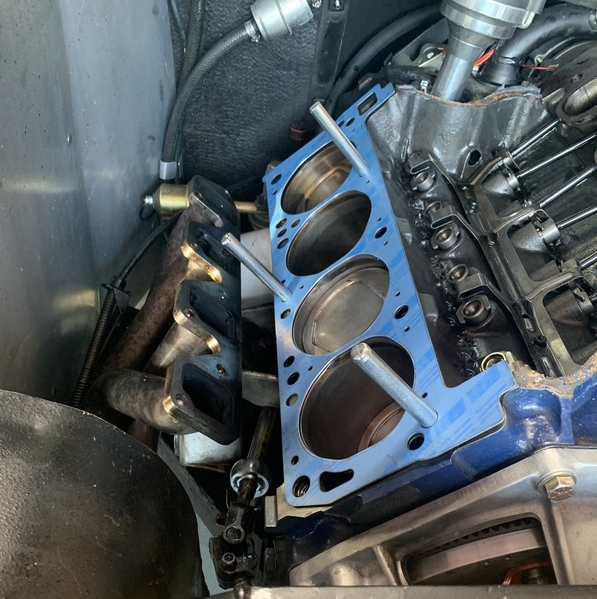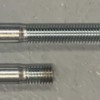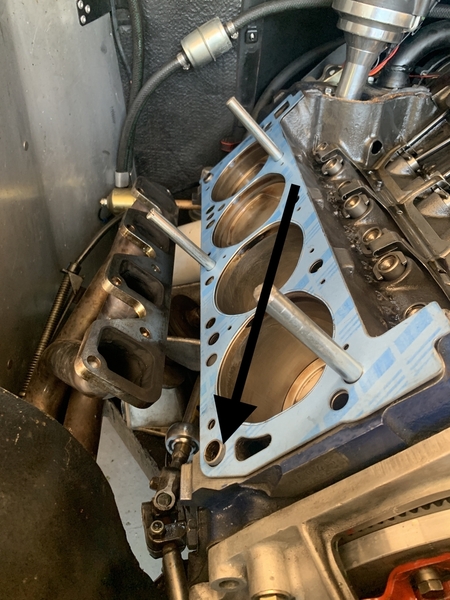Marlin, I just noticed that the permanent ARP studs are fine thread at the top. That is a definite advantage over the coarse thread bolts in the stock configuration. It seems like the coarse thread bolts complain a lot when torqued 105 pounds.
...The Fine threads of the Nuts account for a 40% Increase in 'Clamping Force'.
NO! You do Not 'Need' Head Studs. Unless you want More Treads with-in the Block Full Depth, More Rigidity, more security from 'Walking', the increase in Clamping, and a Stronger Fastener, greater Insurance against Blown Head Gaskets. Or, You are working with a Aluminum Block, it's a must do.
Torquing the Nuts to 90-95 Ft/Lbs Will Allow the Head Gasket to Blow-Out, some time, while at a WOT. It happened to Me Twice!! I called up ARP to get a confirmation on the Required Torque Setting. The Technician replies...Studs for Iron Heads on a Iron Block 130 Ft/Lbs. That was ten Years ago, No Problems Since. Yes! This is right on the threshold of Ripping the Threads out of the Block.
The Gentleman is Right...Never use Head BOLTS on a Aluminum Block!! You Will rip out the Threads! With the Studs, I imagine, then, the torque would be at your 105 Ft/Lb.
A WARNING!! When you feel the need to 'Clean' the Threads in the Block, Never Use a 'Thread Cutting' TAP! No 2 Taps, cut the same thread Clearances. Running a 'New' Tap down an Existing threaded Bore will cut the Threads, Again! Metal will be removed, the result is a 'Looser' fitting fastener (Bolt or Stud), that is permanent and not fixable! To properly clean threads in a bore, take a Head bolt, grind a slight 'Cutting edge' on the first few threads, and run that Bolt down to clean out all debris, and 're-dress' the threads, With-Out Removing additional Metal.
All the Best
MJ
P.S. Imagine leaning into the Engine Bay and Torquing Head 'Nuts' to 130 Ft/Lbs. I proved it can be Done! And I did Not remove the Decklid!!







